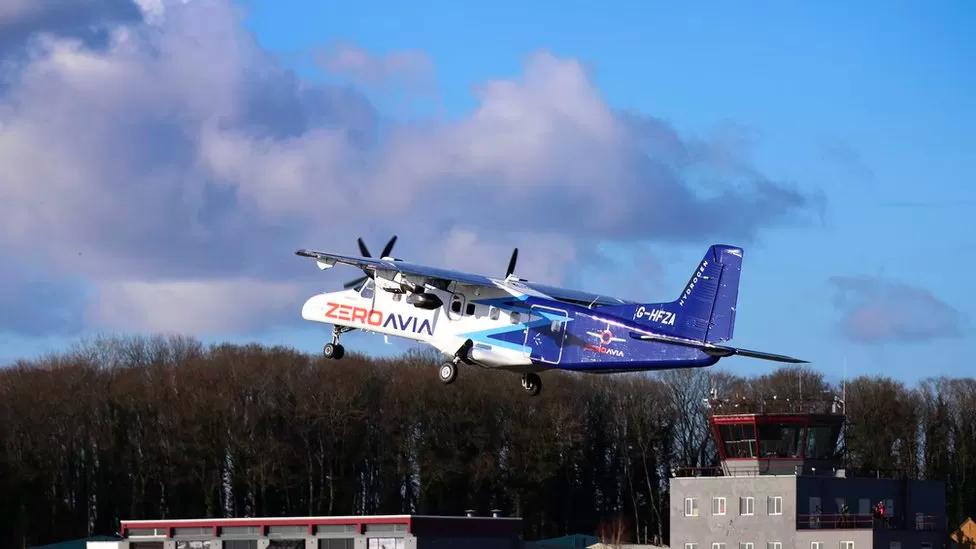Carbon-free flights promised ‘within two years’
- Sujeong Lee
- Sep 6, 2023
- 2 min read
The airline plans to operate commercial flights using carbon-free electric engines by 2025. Zeroavia conducted nine hydrogen-electric engine test flights at Cotswold Airport in Sheeransster. The engine produces solely water as a discharge. According to Sergey Kiselev, vice president of XeroAvia, the engine would aid in the “decarbonization of aviation”. Lots of other aerospace companies are developing hydrogen-powered engines, however most do not expect to fly commercially until 2035. Therefore the companies are considering how to manage to fly without causing climate change.

Image source – https://www.bbc.com/news/uk-england-bristol-66205965
The Gloucestershire-based company is moving considerably faster because it does not design wholly new aircraft. ZeroAvia operates on the Dornier 228, a standard 19-seat plane with two propellers that are typically powered by kerosene. One of these engines has been replaced by an electric engine and electricity is generated on board via hydrogen fuel cells. However, once the technology is validated, both engines will be fueled by hydrogen fuel cells. Only new engines must pass safety testing, and the corporation is in the process of obtaining verification from civil aviation authorities. Test pilot John Keelerby said he piloted the aircraft and managed it without a kerosene engine once it was in the air.
However, there are surely some disadvantages for carbon-free flights. Professor Mace said that “As with all techniques, there are challenges,” The aviation sector must construct whole new infrastructure. Centers for hydrogen production, networks delivering fuel to airports, airport storage, and sites. Moreover, hydrogen is not the same as regular kerosene. Furthermore, Hydrogen occupies a lot of area. To keep everything in order, the gas is compressed to 350 or 700 times the atmospheric pressure. Nonetheless, it occupies more space than kerosene. Cool to minus 253 degrees before transporting in liquid. So airports and aerospace businesses are now reviewing where you can create it and how to move and store it. However, more challenging challenge would help to lead carbon-free flight.
Reference – Harvey, D. (2023, July 17). Carbon-free flights promised “within two years.” BBC News. https://www.bbc.com/news/uk-england-bristol-66205965

Comments